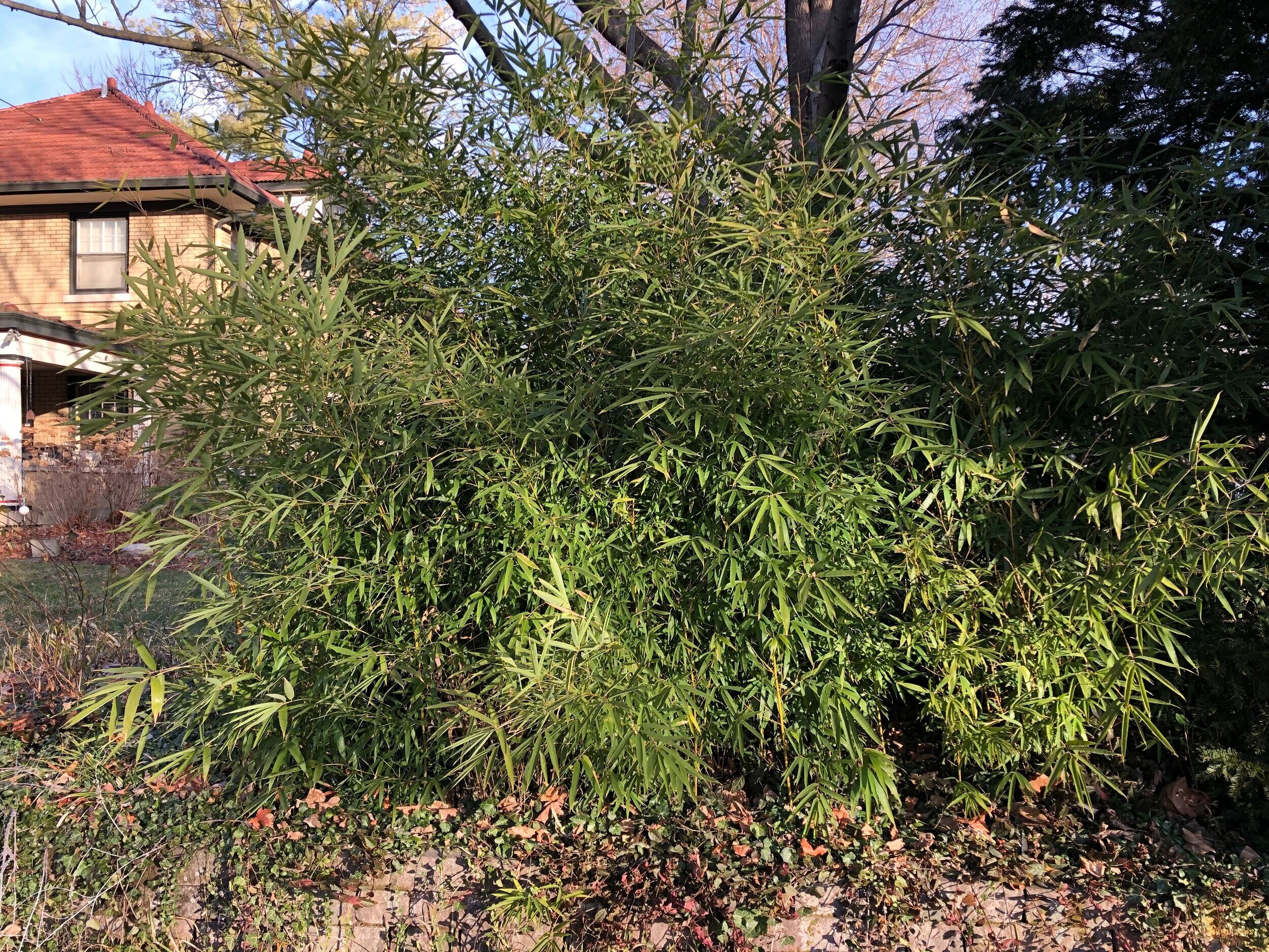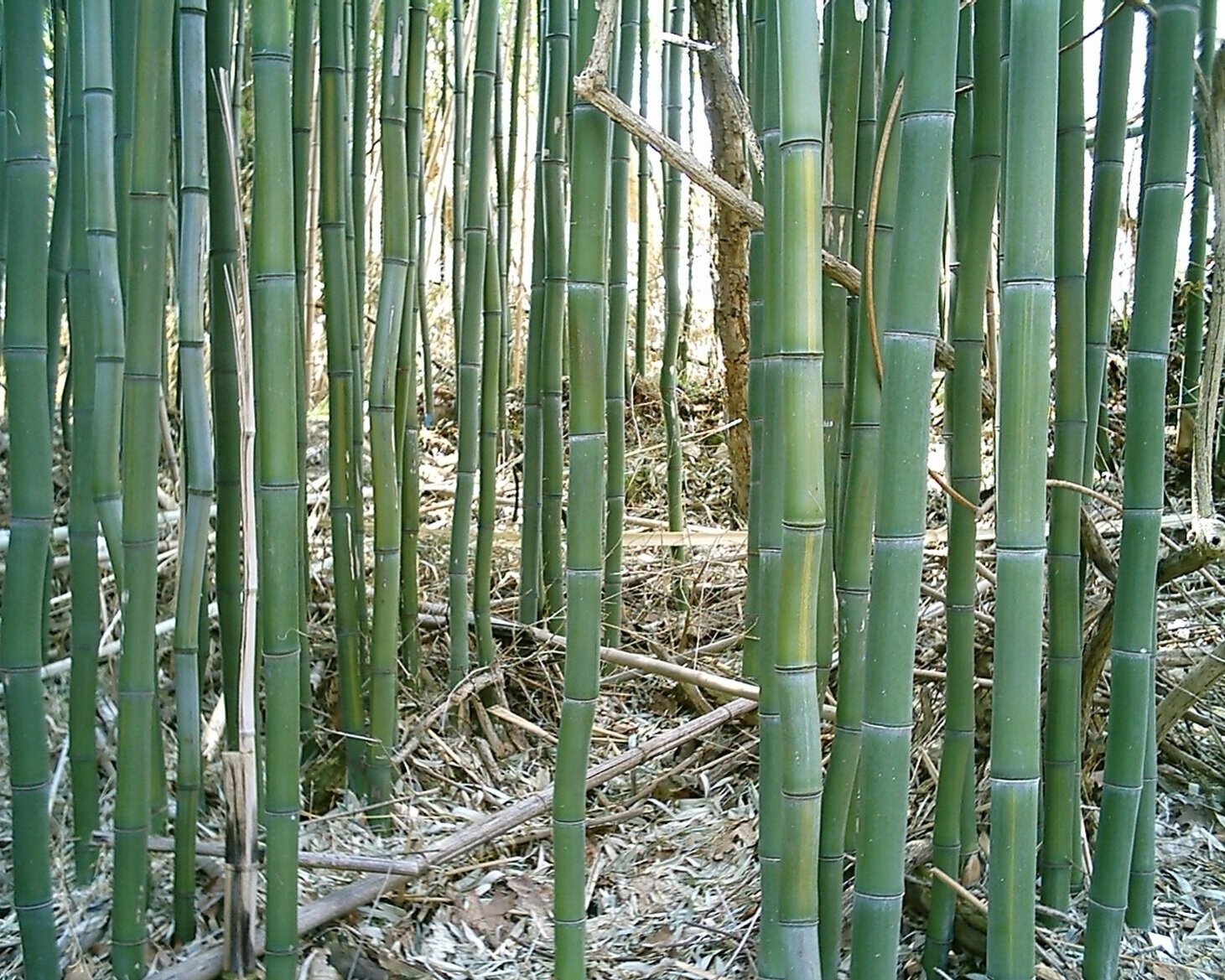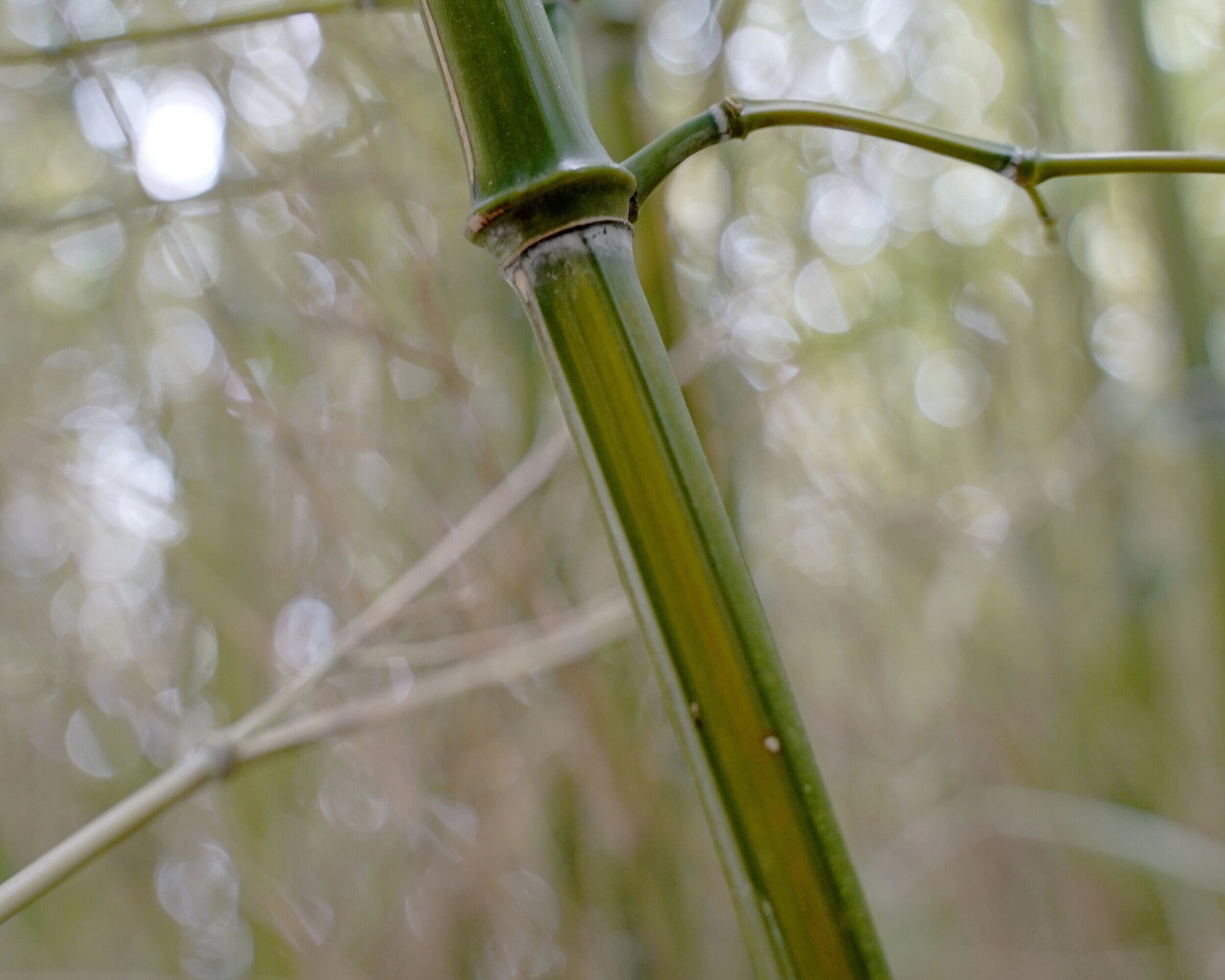January 2022 Invasive Plant of the Month
SICIM Email
Yellow Groove Bamboo (Phyllostachys aureosulcata)
Yellow groove bamboo (Phyllostachys aureosulcata) is a species of running bamboo native to China. It was introduced into the United States in 1908 for ornamental use and timber production. Yellow groove and other running bamboos are among the fastest growing plants on Earth. Though still legally sold here in Indiana, yellow grove bamboo is limited or otherwise regulated at the state and/or community level in multiple states along the east coast.
IDENTIFICATION & BIOLOGY: Yellow groove bamboo is a tall (15-25 feet) perennial grass that resembles narrow trees with short thin side branches. Its stalks (culms) are woody and hollow, up to 3 inches in diameter (.5-1.5 inches in Indiana). The primary identifying characteristic of this bamboo is a yellow groove on the culm, located on every other internode (the space between branch attachments). This feature is found only on young culms and fades after two years. Leaves are lance shaped, olive-green in color and 3-6 inches long. They are generally evergreen but turn bronze or light brown by late winter when they fall, to be replaced by new leaves in spring.
Like all running bamboos, this species colonizes via spreading rhizomes, forming dense groves. It rarely flowers or produces viable seed. In severe winters, stalks may die to the ground, to be replaced by new fast-growing stalks in spring. Winter dieback is most common in northern and central Indiana.
LOOK-A-LIKES: Other species of genus Phyllostachys, including golden bamboo (P. aurea), Bisset’s bamboo (P. bissettii), black bamboo (P. nigra), nude sheath bamboo (P. nuda), and Chinese timber bamboo (P. vivax) have similar habit and characteristics and share the invasiveness of yellow groove bamboo. There are three species in the genus Arundinarea that are the only bamboo native to North America. Of these, cane bamboo (A. gigantea), also known as giant cane or canebreak bamboo, is found throughout the southeast with a small presence in southern Indiana. It resembles the non-native Phyllostachys species but is shorter in stature (6-8 feet) with thinner stalks.
HABITAT AND DISTRIBUTION: Yellow grove bamboo thrives in full sun but tolerates shade and will colonize in woodlands. It is typically found spreading from landscapes where it had been intentionally planted. In a mature stand, rhizome spread has been recorded as much as 25 feet in one year. In riparian areas, detached rhizomes can be washed downstream, starting new infestations. Cold hardy to -15°F, it is present throughout the eastern half of the US, including Indiana. It tolerates all types of soils and its sturdy rhizomes have been known to damage paving.
ECOLOGICAL THREAT: Yellow groove bamboo spreads rapidly via underground rhizomes, creating a solid grove of stalks. It forms a dense monoculture and thick layer of leaf litter that inhibits and often eliminates native plants. Biodiversity is resultantly decreased and the ecosystem of the infested area altered. Blackbirds and starling species often roost in Phyllostachys stands. Through their accumulated droppings they serve as vectors for the human respiratory disease, Histoplasmosis.
CONTROL:
Prevention – Do not plant yellow grove or other non-native bamboo and remove existing plantings.
Manual – Dig to completely excavate root crowns and rhizomes. Thorough removal of rhizomes is essential for successful control. Improper disposal such as dumping can lead to new infestations. After removal, viable plant parts including rhizomes and root crowns should be destroyed by burning. Repeated cutting to the ground alone will not control the species and may lead to more aggressive growth habit. Caution is to be used during removal if roosting starlings or blackbirds were present due to health concerns presented previously.
Chemical – Control using herbicides is difficult because of the dense segmented rhizomes. Repeated chemical control is likely to be required over the course of several years.
Recommended treatments include:
Cut large stems and apply foliar sprays when new sprouts are 3-4 feet tall.
In September to October, cut stems just above ground level between stem sections and immediately apply concentrated herbicide into each cut stalk.
Fire – Has minimal impact.
- Prepared by David Gorden, FASLA - December 31, 2020
NATIVE ALTERNATIVES: There are many medium to tall stature clumping or colony forming native plants that offer multi-season (if not year-round) screening as an alternative in landscapes. Some colony forming native trees may offer a similar visual barrier provided there is space for them to spread, including our native sumacs (Rhus spp.), pawpaw (Asimina triloba), and sassafras (Sassafras albidum).
REFERENCES AND RESOURCES:
Invasive Species Compendium - https://www.cabi.org/isc/datasheet/42069
A Management Guide to Invasive Plants in Southern Forests - https://www.srs.fs.fed.us/pubs/gtr/gtr_srs131.pdf
New Invaders of the Northeast and North Central United States - https://bugwoodcloud.org/resource/pdf/FHTET-2017-04_New%20Invaders_NE.pdf
Invasive.org - https://www.invasive.org/browse/subinfo.cfm?sub=55473
Weed Risk Assessment for Phyllostachys aureosulcata McClure (Poaceae) – Yellow groove bamboo - https://www.aphis.usda.gov/plant_health/plant_pest_info/weeds/downloads/wra/Phyllostachys_aureosulcata_WRA.pdf -
Field Guide to Identification of Phyllostachys Invasive Running Bamboo Institute of Invasive Bamboo Research - https://www.researchgate.net/publication/329558826_Field_Guide_to_Identification_of_Phyllostachys_Invasive_Running_Bamboo_Institute_of_Invasive_Bamboo_Research
#YellowGrooveBamboo #RunningBamboo #Phyllostachys #IndianaInvasivePlants #IndianaInvasivesInitiative




